Renewed interest in borate as a bait toxicant has grown with the increased threat of Formosan subterranean termites, which destroyed this window sill in the Southern Regional Research Center Library. (Photo: Scott Bauer)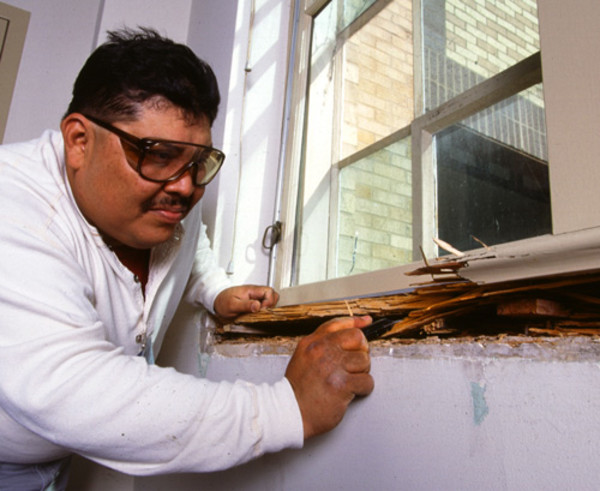
For a forest, wood-destroying fungi and insects are part of nature’s cycle as they decompose fallen trees. The same decay agents, though, can attack the wood in your house.
Thanks to borate, a nontoxic salt that combats a host of house invaders, such damage is easy to prevent. Borate’s advantage is that it acts across a spectrum of wood destroyers-from termites, anobiid beetles, lyctid beetles, and carpenter ants to brown or white wood rot. Another plus is that it migrates and reaches moist areas where insects or fungi are active.
The reason you may not have heard of borate is that until the 1990s toxic chemicals were the standard means of treating termite outbreaks and wood rot problems. For prevention the most commonly used methods were pressure-treated green lumber and ground poisoning. Yet, well before then borate proved nontoxic and successful in preventing problems when it was field tested on important restoration projects such as the 1850s Pontalba Building in New Orleans. Research and the experience of pest-control operators have shown that borate can be just as effective with far less health risk.
Wood treated with toxic chromated copper arsenate (CCA) requires a mask for cutting and cannot be burned, but you won’t have to worry about wood protected with borate. It’s as harmless as table salt. Like salt, though, borate is water soluble, which means rain or contact with the ground can allow it to become mobile. You or your pest-control operator have to take measures to keep the borate from leaching out of the wood. With the help of water repellent, paint, and special precautions for in-ground use, borate becomes a great protector, and our buildings are lucky to have such an environmentally friendly ally.
Borate for wood protection comes in a number of formulations. There are borate powders, granules, poultices, and gels-each is designed to deliver the borate to the site where it will do the most good. Borate powder-and-water formulations (such as Tim-Bor, Board Defense, or Spectracide Terminate) are common for typical applications such as spraying. Glycol-based solutions incorporate this thick, liquid alcohol to allow the borate to more effectively penetrate seasoned wood. Borate gel is designed to be injected into small, predrilled holes in wood. Yet another form of borate is fused plugs that release the preservative when they dissolve in the presence of moisture.
Borate, a nonspecific herbicide, inhibits fungi growth. It can be injected as a gel in porch and other post bottoms or used with epoxy consolidants. (Photo: Courtesy of Jecta)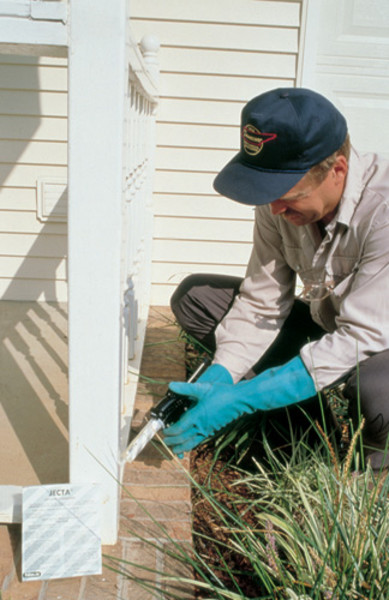
What Is Borate?
Borate is a naturally occurring salt mined in geological saline deposits from Death Valley and Chile. Borate has been used by consumers for decades in the form of laundry additives and boric acid-often spread as a bug killer. The salt is safe enough to use on food preparation surfaces so there is no risk to your family’s health.
While borate is not poisonous to mammals, it’s toxic to insects and can wipe out whole colonies-an especially important characteristic for termite control. Subterranean drywood termites, the pests threatening houses in the Southern states, the Southwest, and California since the 1940s, have been bad enough. Colonies of a few hundred individuals can do great damage by building mud tubes from nests in the ground to the wood in buildings; however, the voracious Formosan termite-a variety of subterranean termite and a recent import-swarms in colonies called cartons. Each carton can have a million individuals, and they need no contact with the ground. Wood treated with borate will be guarded from both kinds.
Unlike poison, borate doesn’t kill instantly. Instead, termites swallow a small amount of the borate, along with the cellulose they’re ingesting, then bring the food back and feed it to the others in the colony. Eventually, the borate inhibits enzymes produced in the termites’ guts. Researchers call borate a bait toxicant, and as such, it’s in line with the integrated pest management you may be using in your garden.
Borate has been so successful that the Southern Building Code Congress International (the building code body in the South) even says that homes built with borate-treated framing lumber don’t need to be ground-poisoned. For the old-house owner, there are many ways to use borate as a preventative or remedial treatment for existing wood.
When the 1827 Dominguez Rancho Adobe in Carson, California, was expanded from kitchen quarters to a comfortable six-room house and chapel, the builders placed wood beams next to the ground, leaving them prone to undermining.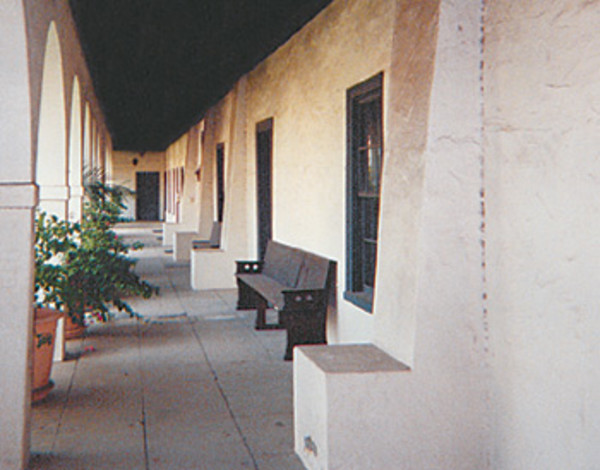
How To Use Borate
Here’s how borate might work in practice. At the 175-year-old Dominguez Rancho Adobe in Carson, California, termites had infested veranda pillars, ceiling beams, and floor beams. A no-no in today’s construction, the wood in this section of the six-room rancho was in contact with the ground. “The original floor was 4×6 beams covered with 1x oak boards that sat on earth,” says Andre Ocampo, vice president of South Shore Exterminating in Huntington Beach, California. “A lot of it had subterranean termites, and it was starting to buckle. As the contractors replaced damaged flooring, we treated the beams with borate products.”
The new section of the house had been built over a crawl space, and the crew was able to apply a borate product (Tim-bor) to the floor joists. The crew used the same treatment in the attic on the building’s original rafters that were infested with termites. On the exterior sill plates, where wood was damp, and on some damp floor joists, they applied another borate solution (Bora-Care).
“We did the treatment a year and a half ago, and there’s no sign of new infestation or rot,” Ocampo says. “Our next project is one I’m really excited about. We’re going to treat all the wood at Mission San Juan Capistrano.” One of the advantages of borate is that it allows homeowners to keep on top of termite infestations or incipient rot without having to use toxic substances. Borate is nonrestricted, which means anyone can use it.
It’s important to know which product to use and how to apply it. To treat an entire house, you’ll probably want to hire a trained operator who has the equipment and know-how to apply the product correctly. For a small infestation or a follow-up treatment, you could do the work yourself.
To halt damage from termites and wood rot, David Ocampo of South Shore Exterminating treated the floor joists of the Adobe with the borate product, Bora-Care.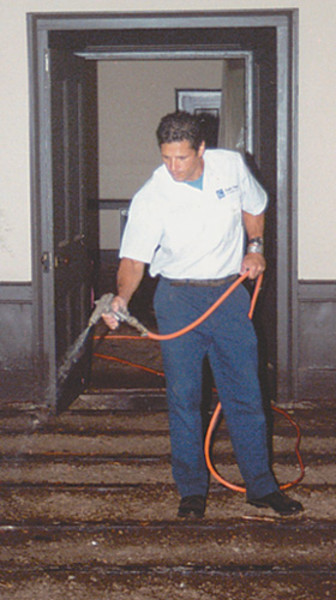
If you find an infestation of termites in a door or windowsill, for instance, you could inject a concentrated borate gel (such as JECTA) into small, pre-drilled holes. You don’t have to strip the paint first. The borate will diffuse under the paint film and begin protection immediately, even if the wood is wet. Gel is also good for protecting the bottoms of posts, which are subject more to rot than termites, as long as there’s no ground contact.
Where to Use Borate
Let’s say the unpainted risers beneath the back porch steps show signs of wood rot. A glycol-borate mix might be the best bet. Checks and weathering in unpainted wood actually improve penetration. If the wood is wet to the core, the borate moves toward the moisture.
If you want to reduce the risk of swarming termites in your attic, you can have the attic rafters, joists, and sheathing treated. The same goes for basements. As long as the sill plates and band joists haven’t been painted, liquid borate will provide protection.
You can’t lose with borate because it’s relatively inexpensive. The cost is $95 to $120 per gallon, and you can treat about 800 board feet of wood, the equivalent of 150 2x4s, 8′ long, or the average amount of lumber in an unfinished basement.
If your house is built with balloon framing, you may be able to finesse a paint brush up into the wall cavity by working from the basement. The ideal is to protect all wood within 3′ of ground level. Even so, you should be able to brush or spray liquid borate on the band joists and mud sill. Outdoors, use a garden sprayer and treat the foundation wall and bottom of the siding. Don’t go overboard because borate is a nonselective herbicide and toxic to plants.
Borate has proved practical for spraying or brushing on heavy timbers in historic structures, from log buildings to totem poles. (Photo: Richard Sexton)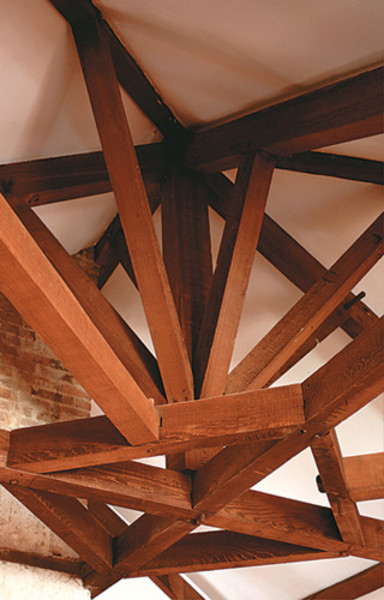
In a heavy-timber building, such as a log cabin, the volume of preservative required is greater than the surface spraying that will protect a normal home’s 2x framing. Treatments that can be brushed on or sprayed (Tim-bor, PeneTreat, Armor-Guard, or Shell-Guard) are the least expensive option, but for maximum penetration of wood that is already showing signs of rot or infestation, you might be better off with the glycol-treatment. Glycol makes the borate soak into dry wood more effectively, and glycol seems to make logs more resistant to termites. This was the treatment the National Park Service chose for totem poles in Alaska. Initially it darkened the wood, but after a few days the glycol volatilized, and the wood returned to its normal color.
Because the ends of logs absorb moisture, it’s a good idea to provide an extra dose of medicine beyond brushing or spraying borate. Inserting rods made from concentrated, fused borate (IMPEL Rods) will spread fungicide through the wood’s fibers when the moisture content rises above 30 percent the level at which decayed fungi become active. The borate protection remains in place even if the wood dries out, and it becomes active again if the moisture level rises.
With precautions, borate treatment can even protect wood in contact with the ground. The key is to provide an ongoing source of borate to replenish any that leaches out, to reduce or eliminate any source of oxygen (which is necessary for decay), and to protect the wood from water. One method is to paint gel on the surface of the post and wrap the post in plastic before putting it in the ground. The plastic cuts off the supply of oxygen and will retard wood rot even if water does reach the post. (Plastic made for this purpose is sold by borate suppliers.) Last, top the post with a zinc or copper cap to prevent water from entering.
Defeating Water Migration with Borate
Because borate follows moisture, it’s particularly effective against subterranean termites. The insects’ mud tubes are moist, and the borate goes right to them. The bad news is that if the wood dries out, the borate dries, and it rises to the wood’s surface where it can be washed off by rain. (It may also diffuse into the soil if there’s ground contact.) That’s why it’s important to keep the wood that you’ve treated from getting wet.
Ambient moisture isn’t a problem. Borate can go through unlimited cycles of wetting and drying as long as the moisture remains on the surface of the wood and isn’t washed off. In attics it should last indefinitely. Even log homes generally have enough of an overhang to prevent borate from washing away with rain, but if you treat a shake or shingle roof with borate, make sure to follow up with a water repellent. The water repellent and borate product must be compatible. Some glycol-containing products may keep the water repellent from drying properly. Check with suppliers before buying, or do a patch test. (Make sure to wait until the glycol is dry before you apply the repellent.)
The termite problem is so severe in the South and Hawaii that you’ll find the future of borate in borate-treated lumber. Two companies that make borate-treated lumber products have retooled nine of their 200 factories, but in the next few years the availability of these materials will spread. Advance Guard dimension lumber is treated with sodium borate, and SmartGuard sheathing, siding, and cellulose insulation is treated with zinc borate, a form of the salt that doesn’t diffuse as easily as others. This zinc borate also functions as a flame retardant. Costs run about 30 percent higher than comparable building products.
While you’re waiting for the new borate goodies, you can always resort to the old dip-treat method. Set up a section of gutter or a bathtub for the borate solution, then immerse the lumber for three to five minutes. Leave the wood soaking for a week, and the chemicals will penetrate 1 or more, but you’ll have to contend with warping or raised grain. If you’re making a repair after borate treatment, remember that borate is a salt, and for your carpentry to last with the wood, you must always use galvanized or stainless steel nails never aluminum or uncoated nails.







